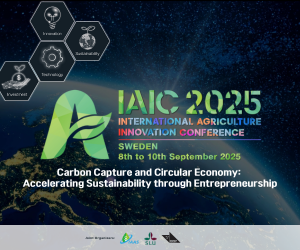3 Factors to Shape the Future of Digital Economy and New Value Creation
By: Jaz Low
Reposted by: Chloe, IAAS Secretariat
While farming used to be a manual labor enterprise, modern technology and equipment has taken the humble agriculturalist’s hands off the toil of growing and preparing food.
How Malaysia is stitching together a vibrant agritech tapestry
Getting to this stage is no easy feat.
Leading this agritech shift is the Malaysia Digital Economy Corporation (MDEC), which prides itself on driving digital investments in the agritech space. The organization provides technology to farmers and offers them microfinancing schemes to implement these solutions. To help them better understand and adapt with new agritech tools, digital training programs are also in session. Yvonne Yong, Director of the Ecosystem Development Division at MDEC shares agritech case studies and how the organization is planting the seeds for a strong Malaysian agritech ecosystem.
MDEC speaks with farm owners and farmers’ associations to understand the urgent problems in agriculture that needed to be resolved, such as staffing and production. Some examples include struggling to employ sufficient farm hands for chicken feed preparation, and others.
MDEC then picks its projects based on three factors:
- Technology readiness for adoption
- Scalability of the technology
- How reliant the country is on imports for that particular food product
Digital training for farmers
Globally, technology has been advancing fast. The COVID-19 pandemic only accelerated the shift in digital transformation, seeing more companies, governments and civil society carry out remote training using digital tools to boost the effectiveness and scale of delivery.
While farmers themselves may not have access to smartphones, the teams who train them often do. The program’s technical and communications teams work together to develop a content strategy to reinforce key messages across multiple channels that farmers have access to. In designing any training program, it’s important to start with the user’s needs and to continuously test, evaluate, adapt, and improve.
By combining good design practice with these approaches, we can ensure that the millions of unconnected farmers around the world are not left behind by the opportunities presented by digital transformation.




